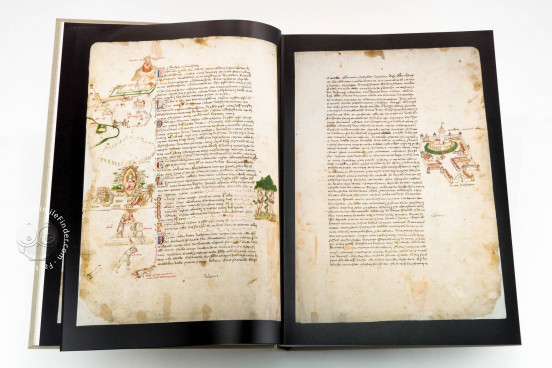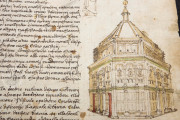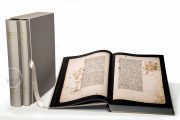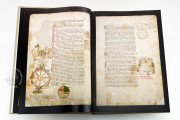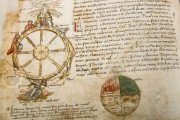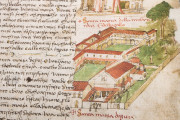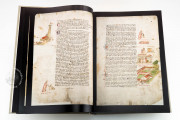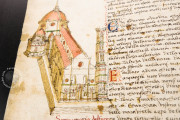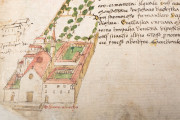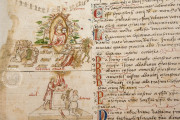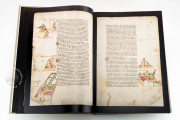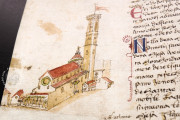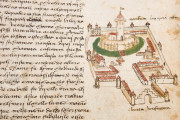The Codex Rustici bears the title Dimostrazione dell’andata del Santo Sepolcro – Demonstration of the Journey to the Holy Sepulchre – and is named after its author, Marco di Bartolomeo Rustici of Florence. In 1441 Marco di Bartolomeo Rustici, a Florentine goldsmith, decided to embark on an existential journey to the Church of the Holy Sepulchre in Jerusalem.
The illustrations in the codex bear fundamental witness to Florence’s appearance in the early fifteenth century, describing churches, monasteries, and hospitals both within and outside the city walls.
The Codex Rustici: an astonishing picture album of fifteenth‐century Florence
The adventure that Marco di Bartolomeo undertook with Master Leale and Antonio di Bartolomeo Ridolfi is also an encyclopedic account modelled after many itineraria mentis in Deum (and inspired by Petrarch and his Itinerarium Syriacum).
It is a spiritual journey that starts in Florence and then returns there, the demonstration of one man’s love for his birthplace, portrayed in the 80 folios that illustrate its geography, the details of its churches, its streets, and its walls. A fever of visions flashes in Rustici’s eyes, reflecting a need to give meaning to his life in the mirror of the world.
Marco writes and rewrites his pages; he allows other texts to interfere with what he has in mind, and the dramatic episodes are often devices to cite other readings. The drafting of the Codex is as fascinating as it was arduous, and Marco di Bartolomeo worked on it until his death in 1457.
The structure of the Codex
The Codex Rustici is divided into three sections or books. The first book consists of 169 chapters depicting numerous religious and secular buildings present in Florence in the first half of the fifteenth century, with a series of exquisite drawings in pen and brown ink with watercolor that are widely renowned for their beauty.
They are constantly studied by international art and architecture historians, as they illustrate the original architectural structure of numerous important religious buildings with great formal accuracy and an appealing visual effect, while also highlighting the urban identity of a number of Florence’s secular structures of the era.
The second book is made up of 63 chapters, in which we find the part of the journey still within Christendom. From Florence to Porto Pisano and Genoa, crossing the Italian peninsula and hugging the Greek coast, it then takes us to the Aegean Sea and Cyprus.
The third is divided into 73 chapters describing the main legs of the journey: departing from Famagusta, the last outpost of Christianity, the sea route heads towards Africa to reach Egypt.
Cairo is the starting point for the overland route to Mount Sinai and Saint Catherine’s Monastery, continuing to Jerusalem, where the itinerary proceeds through Samaria and Galilee and on to Beirut and Damascus.
Binding description
The Codex is bound in rigid parchment datable between the nineteenth and twentieth centuries. The front and back boards measure 41.8 x 28.6 cm and the volume is 9 cm thick.
We have 1 facsimile edition of the manuscript "Codex Rustici": Codice Rustici: Dimostrazione dell'Andata o Viaggio al Santo Sepolcro e al Monte Sinai di Marco di Bartolomeo Rustici facsimile edition, published by Leo S. Olschki, 2015
Request Info / Price
